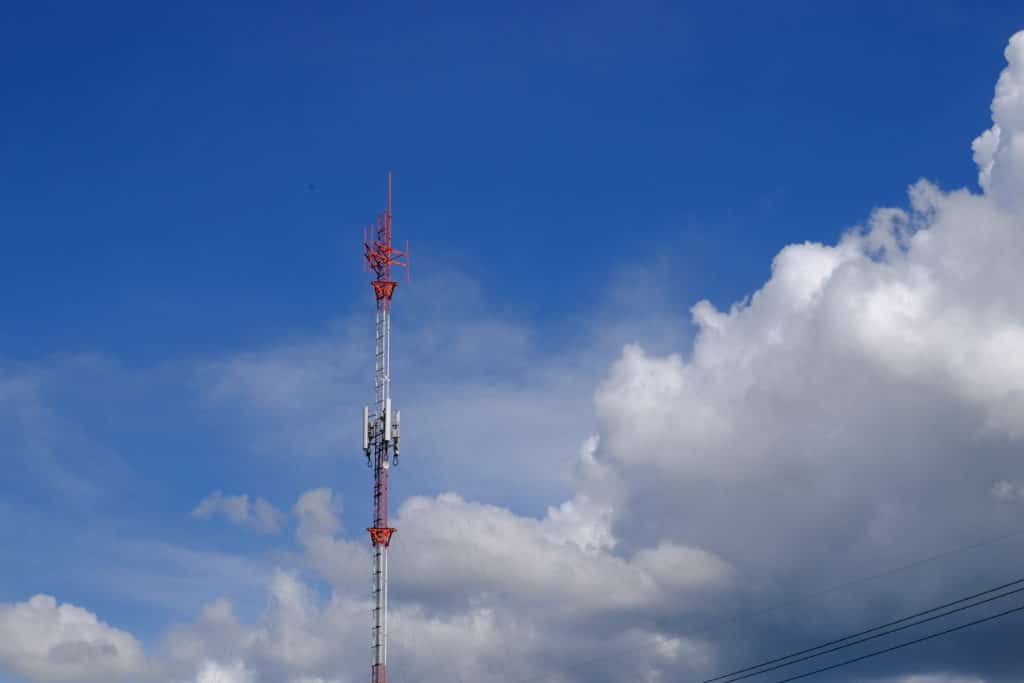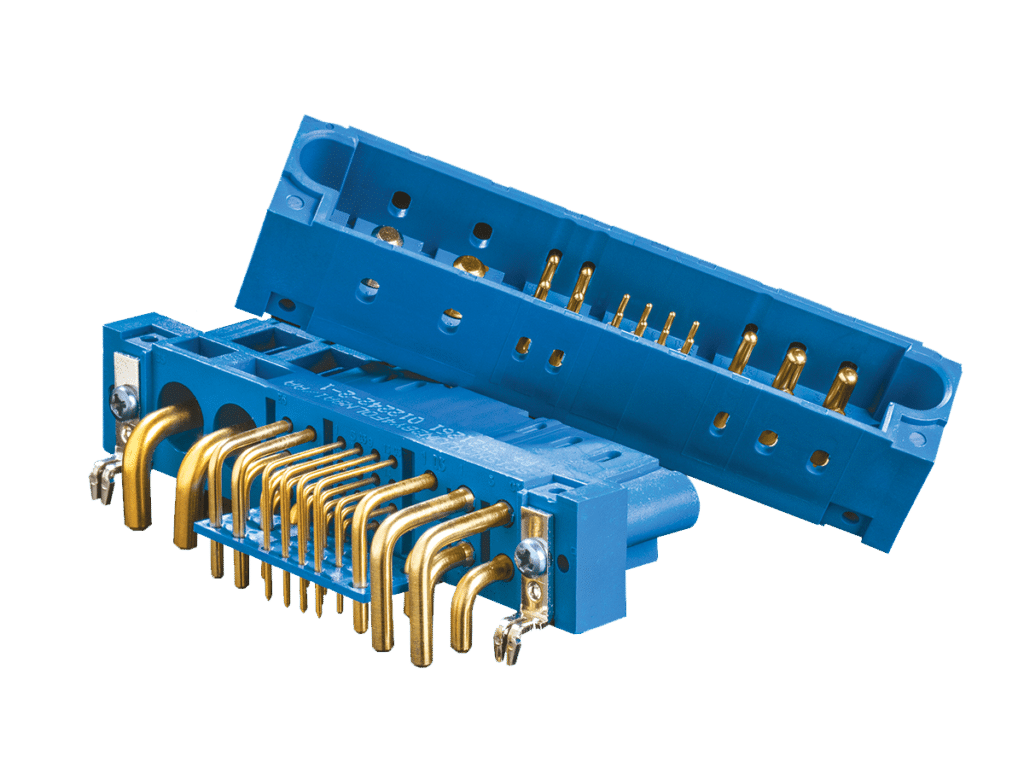5G Connectors
Delivering Power for 5G Connectivity
The introduction of 5G technology in 2019 brought with it the next leap in performance for mobile telecommunications. Smartphone manufacturers were quick to capitalize on this new network to launch handsets that offer the promise of faster-than-ever internet access and the most advanced functionality.
While the introduction of 5G wireless telecommunications has given consumers access to the latest generation of mobile phones, the true value of 5G technology will be realized in other markets. Despite its power as a tool for consumers, 5G promises to make a far greater impact in the world of industry than any of the networks that have gone before. For the first time, the data speeds offered by wireless communication can rival those of the more traditional wired technologies.
The full impact of 5G has yet to be realized. However, designers are beginning to understand the powerful new capabilities that it will bring. Here are a few of the areas in which 5G will revolutionize data communications.
The Smart Factory
The Internet of Things (IoT) has been one of the most interesting developments over the last decade. At the heart of the IoT is machine-to-machine communication, allowing electronic devices to share information without the need for human intervention. Just as with the introduction of 5G technology, the first examples of this technology were seen in the home. Connected machines are now playing a greater part in everyday living, from energy metering to grocery shopping.

However, the use of IoT in the home of tomorrow is just a small example of the functionality that IoT is providing to designers. In the manufacturing world, the Industrial Internet of Things (IIoT) has enabled the creation of the smart factory. Within a traditional factory, machines perform their own tasks, isolated from their neighbors. IIoT, or Industry 4.0 as it is sometimes known, connects these machines into a network that works as a single entity. Machines share data, enabling not just the management of production, but also the supply chain, maintenance, and logistic aspects of the operation.
The introduction of 5G communications into the industrial environment will enable further integration of devices into the smart factory network. Manufacturers will be able to install a private 5G cell to deliver secure connectivity for the entire facility, allowing high-speed data transfer from all parts of the operation, from the smallest sensors to the largest machines. The use of a wireless network will provide unprecedented levels of flexibility, allowing the manufacturer to easily reconfigure their production line in response to new market demands.
One result of this huge increase in data communications is the growth of what is known as edge computing. This brings the power to store and process data closer to where it is gathered. As IoT-enabled devices become more common, users face the challenge of handling the huge volume of data that they generate. Reducing the distance between the source of the data and where it is processed can reduce the latency that might occur if transmission distances were longer. This will be vital in applications that need to act in real-time and will also allow users to reduce the costs of centralized or cloud-based servers.
Vehicle Technology and Medical Devices
Outside the factory environment, other industries will be able to employ 5G communications. The automotive industry is advancing quickly, with the growing capability of electric vehicles, combined with an interest in autonomous or self-driving cars that are now set to become commonplace. This has led to the rise of a new acronym that describes how cars will communicate with other road users – Vehicle-to-X (V2X). In an environment where fractions of a second are vital to safety, the high-speed, low latency communication provided by the 5G network will be vital to the smooth running of tomorrow’s roads and towns.
In the medical industry, 5G is starting to play a key role in the provision of healthcare. As medical devices become smaller and allow the development of wearable technology, the 5G network will enable healthcare to be delivered remotely. The latest generation of med-tech devices will connect remotely via 5G to the patient’s healthcare providers. Patients will no longer need to visit an office or hospital to see a doctor, as they can be monitored and even receive treatment remotely, allowing them to continue with their daily lives.
The advances in communication technology have even found applications in military operations. The current global situation sees military forces conducting deployments into remote regions of the world, and unable to depend on local infrastructure. Whether conducting conventional military operations, multinational peacekeeping, or humanitarian relief, forces must be able to bring their infrastructure with them. This means not only the basic needs of shelter, food, and water but increasingly sophisticated communication systems. The ability to deploy a local communications network utilizing 5G technology allows military commanders to share information rapidly.
The traditional interconnect devices that have been used in military and aerospace applications – large and bulky circular connectors – are giving way to products that are more familiar to the public. Compact hand-held and vehicle-based devices that are being employed on the battlefield have much in common with commercial mobile phones. However, the power requirements of these new systems demand a new approach to connectivity.
More Computing Power Equals More Power
The wireless nature of 5G technology means that the role of 5G connectors in this space is changing. Despite the promise of edge computing, the datacenter will form the hub of the 5G network, and the increased data rates means that more equipment will need to be housed within these buildings. This will result in higher demands for power and cooling. Some studies are predicting that by the end of this decade, datacenters will consume as much as 20% of global energy production. With this much power concentrated into the 5G infrastructure, energy management will become more important, as will thermal efficiency.

Scorpion Modular Connectors
Connectors have a major impact on the efficiency of any power network, and this is one of the areas in which Positronic can provide tangible benefits to customers. The use of high conductivity materials, along with large surface area contact interfaces (i.e. Posiband), provide designers with 5G connectors that maximize the amount of energy that can be transmitted per inch of rack space, while minimizing the thermal management problems they create. The legacy CompactPCI power input backplane connectors and the newer Scorpion or Goldfish family of products employ these superior contact designs to provide high power density and minimize energy losses.
Connecting in Harsh Conditions
As we have seen, the potential for 5G technology goes far beyond simply smartphones and connected homes. This means that wireless-enabled devices will be deployed into challenging environments. Equipment that is employed on the shop floor, in the fields of the smart farm, or on the digital battlefield will need to provide a level of robust and reliable performance that is not found in the home or office. Although the 5G network will provide fast, wireless communications, these devices will need to be provided with power, and the 5G connectors used will need to be able to deliver efficiency and reliability even in the harshest conditions.
Positronic products with their low inherent contact resistances and large surface area contact designs deliver robust connectivity for use in these demanding applications. Designed for use in tough conditions such as those found in railroad and military applications, Positronic connectors have been tested to rigorous standards for resistance against shock, vibration, rapid temperature changes, humidity, and the like. This makes Positronic an ideal partner for power applications in field-deployed equipment.
Power to the 5G Network
While high data speeds and rapid communication are at the heart of the 5G network, the need for efficient power connectivity will be vital if the promise of this new technology is to be fulfilled. The energy-hungry datacenter will become the world’s largest single consumer of electricity, while the growth of edge computing and wireless-enabled devices will see equipment being deployed into some of the most demanding conditions on Earth.
5G connectors will have a key role in the future of 5G technology. Positronic connectors, with their superior contact design and use of high-performance materials, are ideal providers of 5G connectors for designers who are faced with higher energy requirements in compact devices.
Find Your Sales Agent
We cannot locate a sales agent for the country you selected.
Please view our global locations and contact the facility that is most geographically near you.